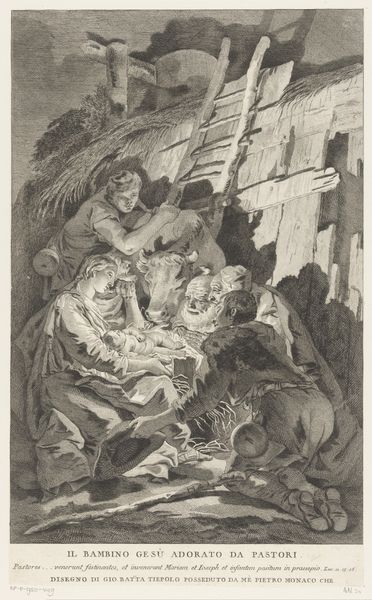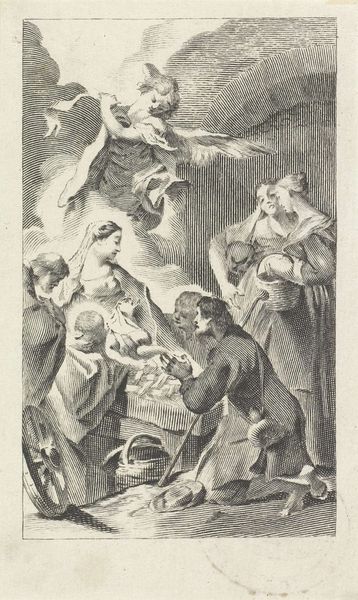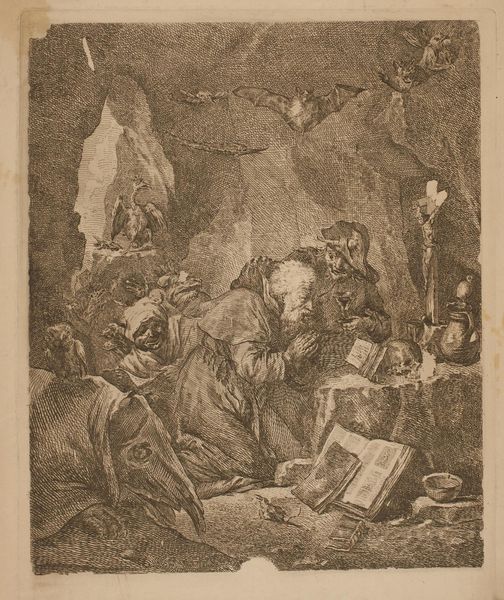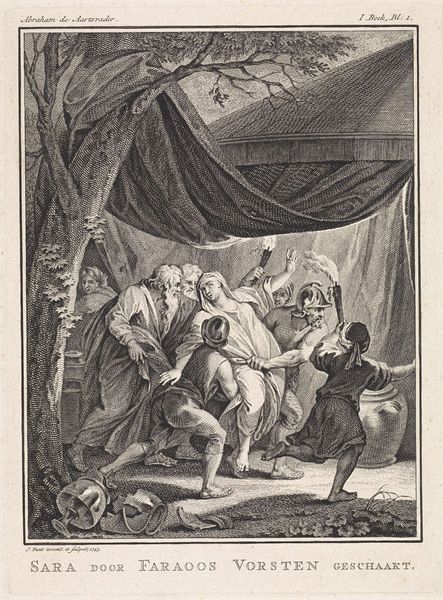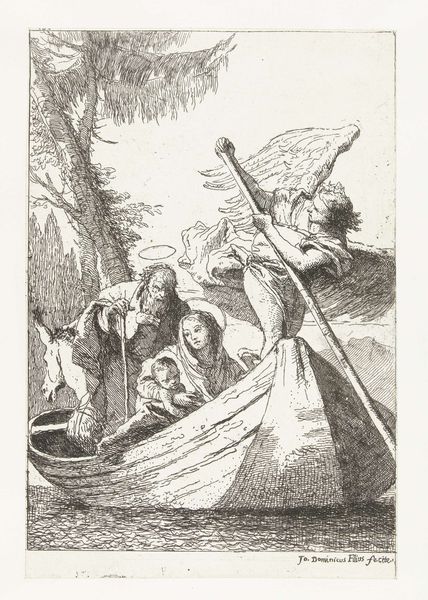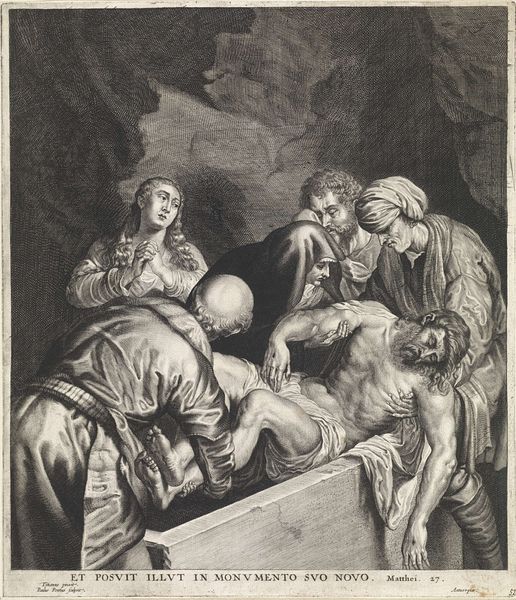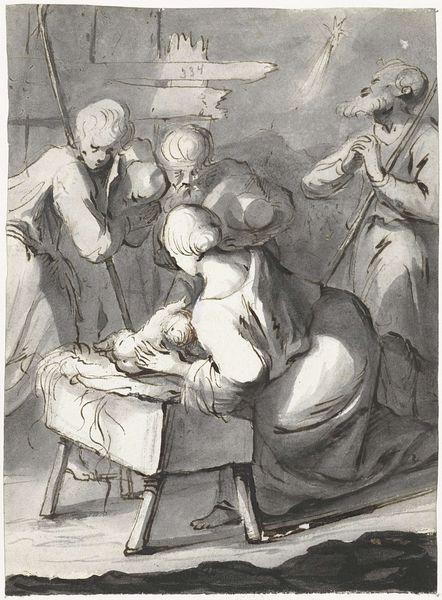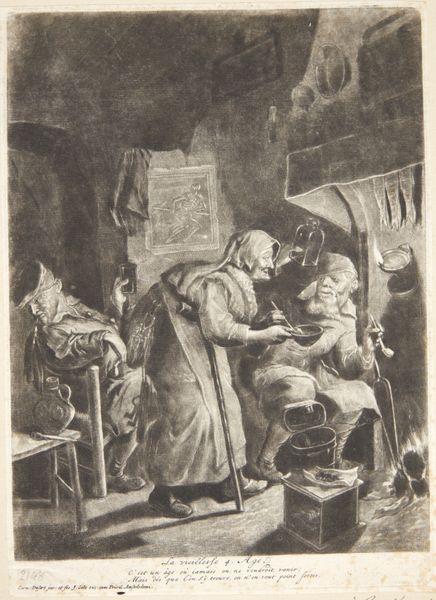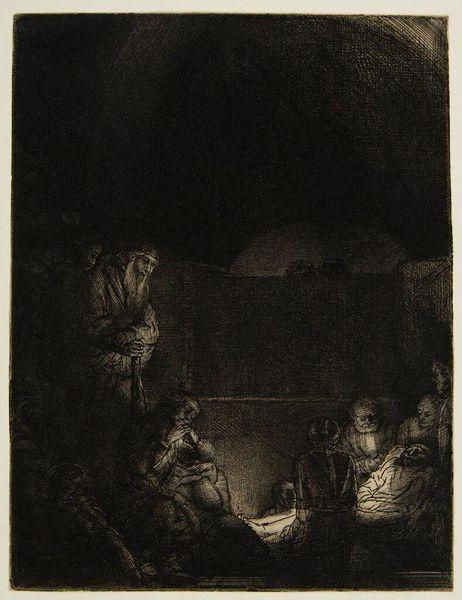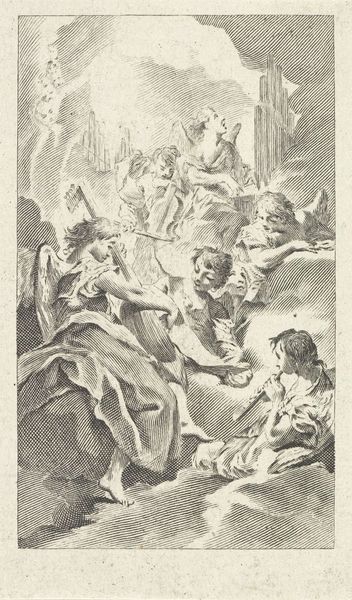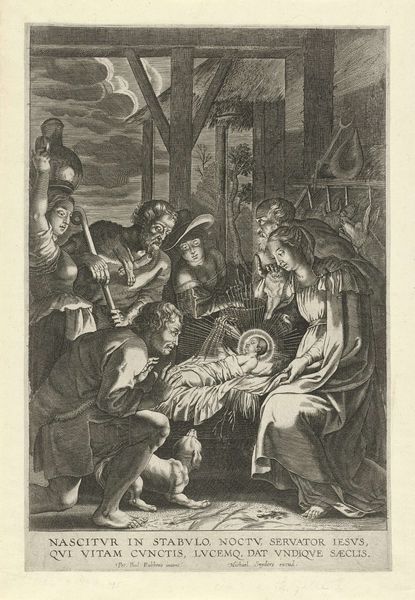
drawing, ink
#
drawing
#
narrative-art
#
baroque
#
figuration
#
ink
#
pencil drawing
#
history-painting
Dimensions: height 205 mm, width 163 mm
Copyright: Rijks Museum: Open Domain
Moses ter Borch made this drawing, "The Three Marys at the Tomb," using brush in gray ink around the 1660s in the Netherlands. The image depicts a scene from the New Testament, but it also speaks to the religious and artistic climate of the Dutch Golden Age. Consider the rise of Protestantism and its impact on artistic patronage. The Dutch Reformed Church frowned upon elaborate religious imagery, leading artists to explore biblical themes in more intimate and personal ways. Here, the composition is stark, focusing on the emotional reactions of the women. The angel casually pushes the heavy stone of the tomb. What does that tell us about the representation of religion? How did artists navigate the expectations of both religious institutions and the art market? To fully understand this drawing, we can delve into theological debates of the time, records of artistic commissions, and the biographies of artists like Ter Borch. The meaning of this work lies at the intersection of faith, artistic expression, and the social forces that shaped 17th-century Dutch society.
Comments
No comments
Be the first to comment and join the conversation on the ultimate creative platform.
